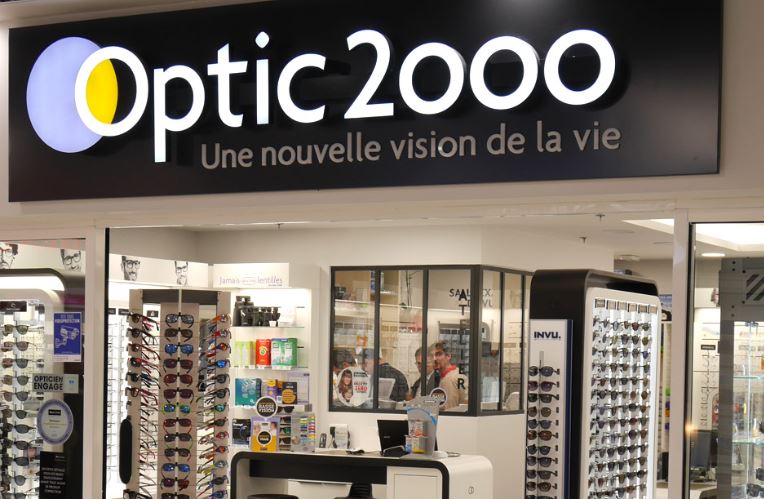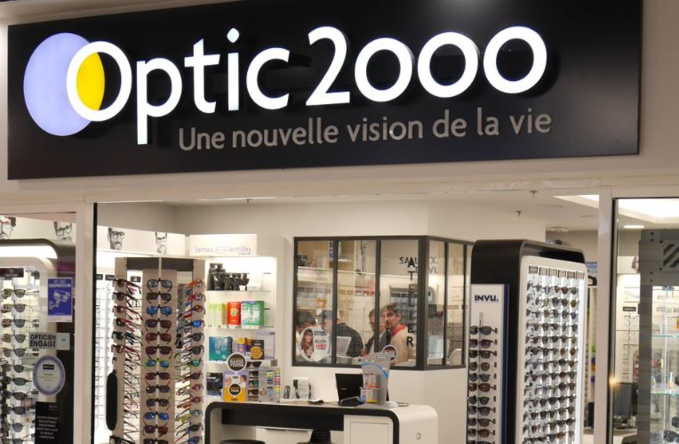A history of exponential growth since the 1960s
Until the second half of the 20th century, the French prescription eyewear market was small and extremely fragmented. Back in the days, many people in Europe who needed glasses simply could not afford them, and those who could avoid wearing them, did, for aesthetic reasons. However, as production techniques improved and glasses began being cheaper, and increasing share of the population started purchasing them. Foreseeing that demand was going to grow dramatically, a group of 5 eyewear specialists united to address the market on a national scale, thus forming Optic 2000. As the century ended, their foresight was rewarded, as they now hold the leading position in optics, in France. CEO Yves Guénin says “Back then, Optic 2000 was ahead of its time, in terms of marketing, production and distribution. Come to think of it, we always have been!” Optic 2000 has, indeed, started addressing foreign markets, predicting that Europe was going to become an epicenter of the global market in just a few years, and that the market would, once again, consolidate.
Technological innovation
Numerous challenges had to be overcome, to get glasses to where they are now. Prescription spectacles, as they were then called, were fragile, uncomfortable and rudimentary. Constant effort had to be poured into the production techniques. Most frames, nowadays are made of aluminum, which offers the best strength-to-weight ratio, or some type of complex plastic - ranging from epoxy resin to polycarbonate. These new materials make the pair of glasses lighter, easier to wear and clean, and harder to break that previous models. Optic 2000 took a two-way stance on technology: pushing the newest products on the market and simultaneously listening to clients’ demands to send their remarks back up the chain. By doing so, it stuck close to the market it now leads. Naturally, optics research is the main money-pit, as glass today must be clear, resistant, flexible, easy to clean and non-reflective - all the things it was not when the company was created. Nonetheless, the expense was not spared, and Optic 2000 is now recognized as one of the highest-quality firms in France.
Streamlined mass production
One of Optic 2000’s toughest challenges was how to distribute an expensive product that many people needed but most couldn’t afford. Naturally, the response to such problems is generally to reduce quality and sub-contract production, so as to lower prices. But that didn’t sit well with Optic 2000’s management, with their attachment to quality and their consistent high-tech investment. By pressing the government to cover prescription glasses for its citizens, the entire industry was able to achieve simultaneously high levels of quality and generalization of the product.
Focus on design
Glasses were not only expensive, bulky and brittle, they were also ugly. As a result, a sizable proportion of the people who did need glasses didn’t wear them, generally leading to aggravation of their sight impediment. Optic 2000 chose not only to address the way glasses looked, but also how people looked wearing glasses : making the contraption an object of style and fashion. It took many years to do so, but glasses today are considered a sign of distinction and sophistication.
Taking the market as it is: varied and rich
Although the decision to make eyewear accessible to all was clearly relevant, and helped Optic 2000 to where it is nowadays, choosing the one-size-fits-all approach would clearly have been a mistake. Yves Guénin adds “glasses are worn on the nose, right in the center of the body part which identifies us. Of course people want something that fits their shape and style, specifically! We’ve worked hard on shapes, colors and styles, since we’ve started, and we’ll continue to work on them.” Eyewear is about seeing, but also about being seen. Addressing only one side of the market would have been missing half the point.
A global approach on prescription glasses
The domestic market is now mastered, it’s time to address international markets for Optic 2000. The world of eyewear production and distribution will contract in coming years, under the combined pressures of technology, the age-old American competition and the slowly-rising Asian manufactures. Because the eyewear market encompasses luxury items and cheap products, addressing fashion victims as much as people who simply need to be able to see, Optic 2000 figures it has an edge on the competition. Asia can produce big and cheap, but will need many more years before it can catch up with the optics technology. Euromonitor reports that “Globally the luxury market is growing with Asia Pacific as the fastest growing region. In 2015 Asia replaced North America as the second largest market after western Europe. At the rate Asia Pacific is growing it is likely to almost match Western Europe by 2020”, a growth rates that leads manufacturers to focus on production, not quality. The US and Canada have the opposite problem: they know how to build well, but can’t contain their prices below competitive thresholds. Optic 2000 knows how to do both.
Optic 2000 has thrived in its national market, which has enabled it to develop top-tier technology. This asset will prove extremely useful in coming years, as the French firm will run into American and European competition, head-on, on foreign markets. In its initial approach, the strategy was based on the generalization of prescription glasses for anyone needing them, and the simultaneous image-shaping to render eyewear fashionable, for high market segments. No doubt has this strategy kept a good part of its relevance, and be re-used to some extent for future developments.
Until the second half of the 20th century, the French prescription eyewear market was small and extremely fragmented. Back in the days, many people in Europe who needed glasses simply could not afford them, and those who could avoid wearing them, did, for aesthetic reasons. However, as production techniques improved and glasses began being cheaper, and increasing share of the population started purchasing them. Foreseeing that demand was going to grow dramatically, a group of 5 eyewear specialists united to address the market on a national scale, thus forming Optic 2000. As the century ended, their foresight was rewarded, as they now hold the leading position in optics, in France. CEO Yves Guénin says “Back then, Optic 2000 was ahead of its time, in terms of marketing, production and distribution. Come to think of it, we always have been!” Optic 2000 has, indeed, started addressing foreign markets, predicting that Europe was going to become an epicenter of the global market in just a few years, and that the market would, once again, consolidate.
Technological innovation
Numerous challenges had to be overcome, to get glasses to where they are now. Prescription spectacles, as they were then called, were fragile, uncomfortable and rudimentary. Constant effort had to be poured into the production techniques. Most frames, nowadays are made of aluminum, which offers the best strength-to-weight ratio, or some type of complex plastic - ranging from epoxy resin to polycarbonate. These new materials make the pair of glasses lighter, easier to wear and clean, and harder to break that previous models. Optic 2000 took a two-way stance on technology: pushing the newest products on the market and simultaneously listening to clients’ demands to send their remarks back up the chain. By doing so, it stuck close to the market it now leads. Naturally, optics research is the main money-pit, as glass today must be clear, resistant, flexible, easy to clean and non-reflective - all the things it was not when the company was created. Nonetheless, the expense was not spared, and Optic 2000 is now recognized as one of the highest-quality firms in France.
Streamlined mass production
One of Optic 2000’s toughest challenges was how to distribute an expensive product that many people needed but most couldn’t afford. Naturally, the response to such problems is generally to reduce quality and sub-contract production, so as to lower prices. But that didn’t sit well with Optic 2000’s management, with their attachment to quality and their consistent high-tech investment. By pressing the government to cover prescription glasses for its citizens, the entire industry was able to achieve simultaneously high levels of quality and generalization of the product.
Focus on design
Glasses were not only expensive, bulky and brittle, they were also ugly. As a result, a sizable proportion of the people who did need glasses didn’t wear them, generally leading to aggravation of their sight impediment. Optic 2000 chose not only to address the way glasses looked, but also how people looked wearing glasses : making the contraption an object of style and fashion. It took many years to do so, but glasses today are considered a sign of distinction and sophistication.
Taking the market as it is: varied and rich
Although the decision to make eyewear accessible to all was clearly relevant, and helped Optic 2000 to where it is nowadays, choosing the one-size-fits-all approach would clearly have been a mistake. Yves Guénin adds “glasses are worn on the nose, right in the center of the body part which identifies us. Of course people want something that fits their shape and style, specifically! We’ve worked hard on shapes, colors and styles, since we’ve started, and we’ll continue to work on them.” Eyewear is about seeing, but also about being seen. Addressing only one side of the market would have been missing half the point.
A global approach on prescription glasses
The domestic market is now mastered, it’s time to address international markets for Optic 2000. The world of eyewear production and distribution will contract in coming years, under the combined pressures of technology, the age-old American competition and the slowly-rising Asian manufactures. Because the eyewear market encompasses luxury items and cheap products, addressing fashion victims as much as people who simply need to be able to see, Optic 2000 figures it has an edge on the competition. Asia can produce big and cheap, but will need many more years before it can catch up with the optics technology. Euromonitor reports that “Globally the luxury market is growing with Asia Pacific as the fastest growing region. In 2015 Asia replaced North America as the second largest market after western Europe. At the rate Asia Pacific is growing it is likely to almost match Western Europe by 2020”, a growth rates that leads manufacturers to focus on production, not quality. The US and Canada have the opposite problem: they know how to build well, but can’t contain their prices below competitive thresholds. Optic 2000 knows how to do both.
Optic 2000 has thrived in its national market, which has enabled it to develop top-tier technology. This asset will prove extremely useful in coming years, as the French firm will run into American and European competition, head-on, on foreign markets. In its initial approach, the strategy was based on the generalization of prescription glasses for anyone needing them, and the simultaneous image-shaping to render eyewear fashionable, for high market segments. No doubt has this strategy kept a good part of its relevance, and be re-used to some extent for future developments.



















